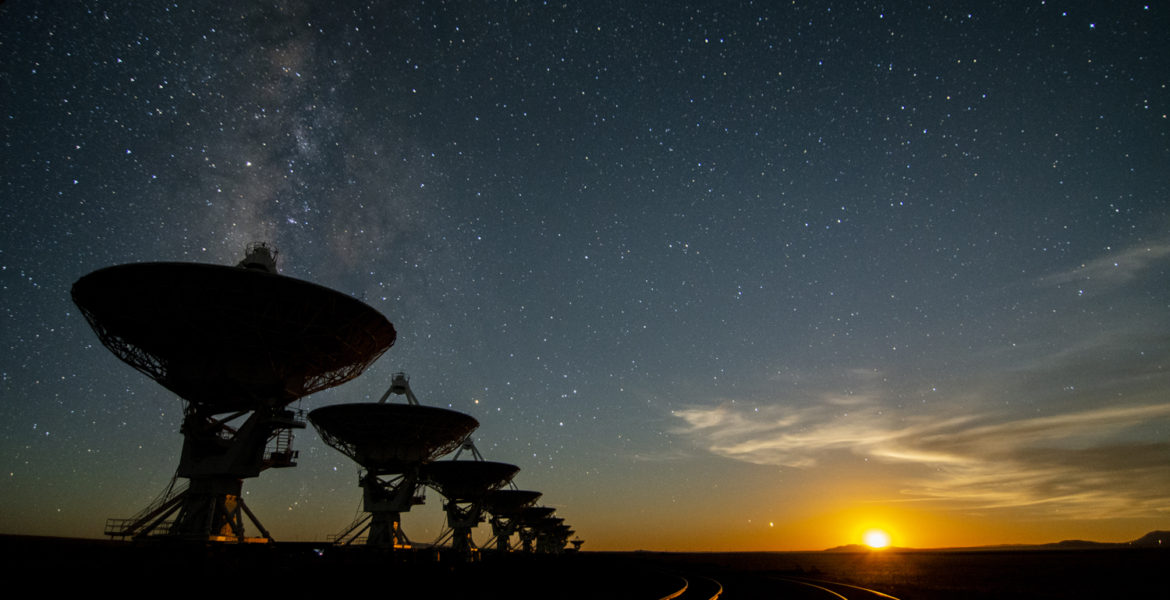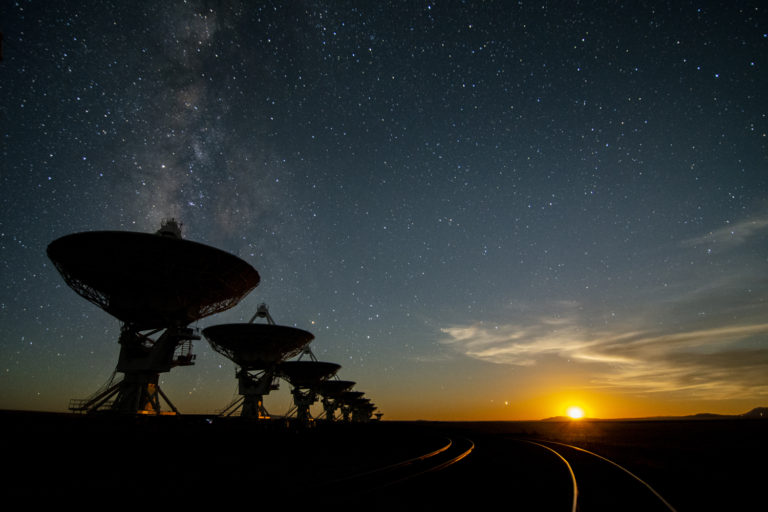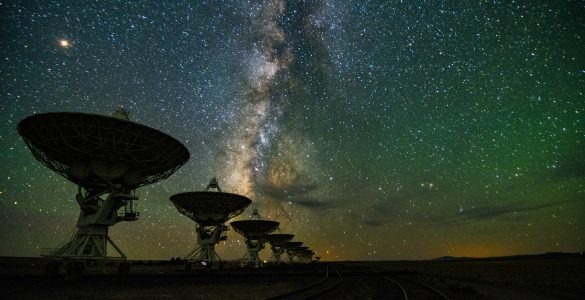Recent news reports of planned constellations of communication satellites, including the SpaceX Starlink proposal, have pointed out the potential impacts these systems may have on radio astronomy. For decades, the U.S. National Radio Astronomy Observatory (NRAO) and the Green Bank Observatory (GBO), in cooperation with the National Science Foundation, have worked to ensure that innovations in communications can advance while still preserving our ability to explore the Universe from Earth and conduct essential fundamental research through radio astronomy.
Most recently, the NRAO and GBO have been working directly with SpaceX to jointly analyze and minimize any potential impacts from their proposed Starlink system. These discussions have been fruitful and are providing valuable guidelines that could be considered by other such systems as well. To date, SpaceX has demonstrated their respect for our concerns and their support for astronomy. This includes an agreed-upon protocol to monitor impacts and address issues to NRAO’s current and future cutting-edge research facilities. We continue to monitor, analyze, and discuss the evolving parameters of the SpaceX system. Among the many proposals under consideration are defining exclusions zones and other mitigations around the National Science Foundation’s current radio astronomy facilities and the planned future antenna locations for the Next Generation Very Large Array. We also are working with our international partners, including the Square Kilometer Array, to present their concerns as well.
The United States continues to be a world leader in both radio astronomy research and engineering innovations. With the explosion of wireless technologies and the growing potential to lease portions of the electromagnetic spectrum for commercial purposes, it is essential that we safeguard our ability to perform basic research. Ground-based astronomy, whether optical or radio, has benefits that cannot be matched by even the most advanced space-based observatories. The recent imaging of a supermassive black hole is just one example of how ground-based radio astronomy facilities provide powerful and unique capabilities.
The NRAO looks forward to future discussions and is confident that the needs of both the research and communications communities can be met and preserved.
Tony Beasley
NRAO Director/AUI VP of Radio Astronomy Operations










